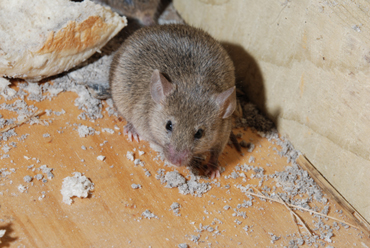Pests
Mouse
Mus musculus – Mice are among the most successful pests. This is due to their remarkable ability to adapt to varying climates and environments.
Mice have a very good sense of balance and can handle themselves physically under extreme circumstances. They know how to climb, jump, swim and even how to squeeze through tiny openings which may be only 6-7 mm high. They are courageous and curious by nature and show no fear for new things.
Mice are usually active during the night, even though there may be some activity also during the day. If there is ample food resources and shelter around, they only need to move the odd metre. Mice are omnivores, but they prefer cereals. If the supply of water is scarce, they may survive on just the moisture in the food.
Mice have a relatively bad eye sight, which is why their movements depend more on their sense of smell, taste, touch, and hearing. Mice react to sounds and use their sharp sense of hearing to detect and avoid dangers. Mice have long whiskers near their noses and sensory hairs all over their bodies.
Appearance: Mice are shorthaired and the colour may vary from light brown to black, with a lighter under side. Their ears and tails bear little hair. Adult animals weigh about 12-30 grams. The body is about 15-19 cm long, inclusive the tail, which represents more than half the length.
Reproduction / progression: Mice reproduce quickly. Indoors the mice may give birth all year round. A grown female may have up to 10 litters and raise a total 60 new adults every year.

Mus musculus





 CONTACT US
CONTACT US